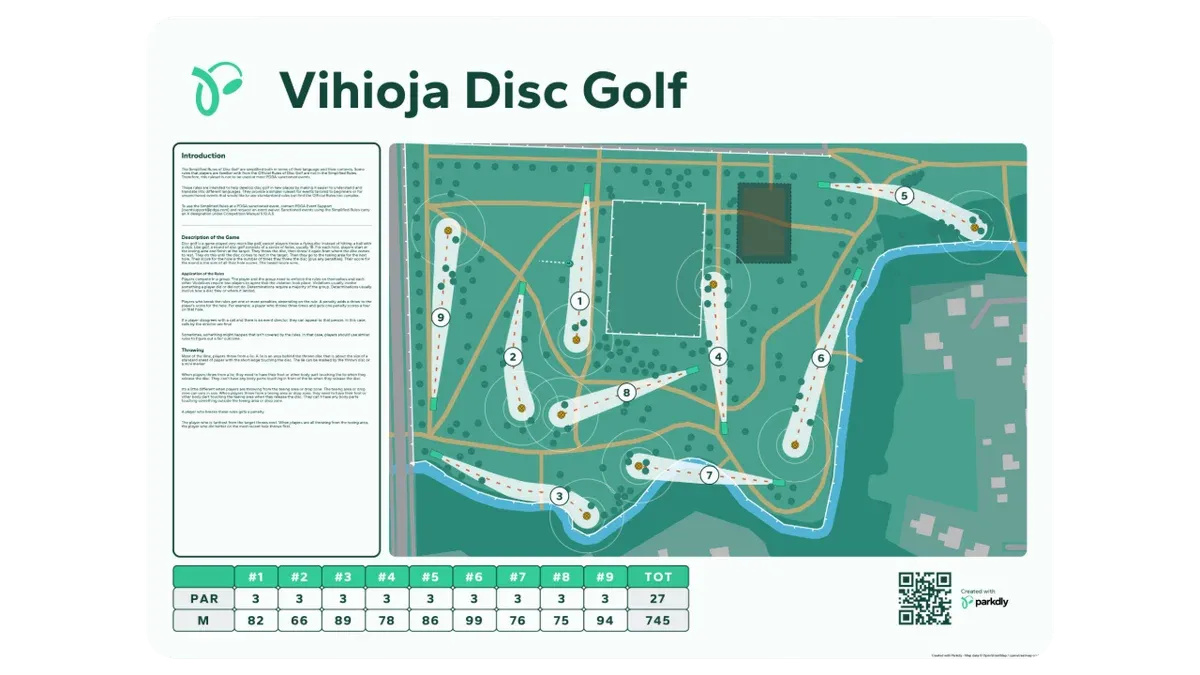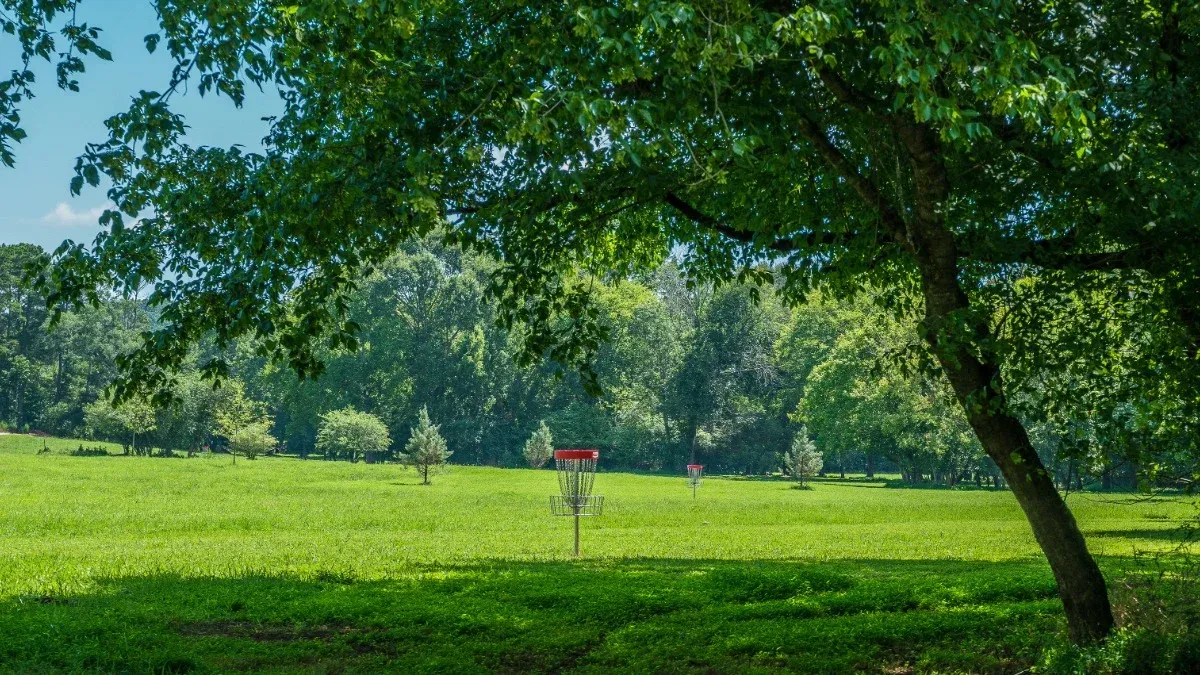Designing a disc golf course is much more than dropping baskets in the woods. It’s a strategic blend of planning, player psychology, and environmental awareness. A well-designed course offers enjoyable flow, fair challenge, and safe, sustainable play — no matter if you’re building a casual 9-holer or a championship-level layout.
This guide breaks down the core principles of disc golf course design to help you create a layout that players remember, return to, and recommend. It serves as a perfect companion to our Ultimate Guide to Disc Golf Course Design, which covers the full design process from land selection to signage.
Know Your Audience
One of the most important disc golf course design principles is understanding who you're designing for.
- Beginners or families: Shorter holes, fewer obstacles, clear paths, and simple signage
- Intermediate players: Balanced mix of difficulty, with opportunities for both scoring and strategy
- Advanced and pro-level: Demanding shot selection, risk-reward layouts, advanced terrain use, OBs, and multiple par 4s and 5s
If your course needs to serve multiple audiences, include short and long tee options, or consider dual pin placements to allow layout variation.
Designing with your players in mind ensures your course is playable, enjoyable, and well-rated over time.
Safety Comes First
Every disc golf course design should begin with a safety audit. Unsafe holes can lead to injury, complaints, or course closure.
- Avoid crossing fairways or shared landing zones
- Keep tees and baskets far from roads, parking areas, or pedestrian paths
- Use elevation, foliage, or fencing to naturally separate high-risk areas
- Eliminate blind shots where players, pedestrians, or vehicles might be exposed
Tip: Design as if the course is always busy. If it wouldn't feel safe at full capacity, redesign it.
For official recommendations, see the PDGA’s course safety guidelines.
Focus on Flow and Navigation
Disc golf course flow refers to how naturally players move from one hole to the next. Disjointed layouts hurt the experience and slow down play.
- Avoid zigzag layouts or long backtracks
- Use a logical progression, ideally in loops (front/back nine or figure-eight pattern)
- Include clear “Next Tee” signage at the end of every hole
- Use natural terrain features to guide players
Walk the course yourself with a bag. A layout that feels natural will keep players moving and engaged.
Create Variety to Keep Players Engaged
A lack of variety is one of the most common course design flaws. Aim to challenge different skills throughout the round.
- Shot diversity: Include hyzer, anhyzer, and straight drives
- Distance variety: Mix short technical holes with longer par 4s and 5s
- Terrain use: Combine wooded lines, open fields, and mixed canopy shots
- Hazard design: Introduce mandos, OBs, and water only when they enhance the strategy of a hole
The best disc golf courses tell a story through variety. Let each hole offer something new.
Stay Flexible in the Early Phases
Course design is an evolving process. It’s wise to stay adaptable before finalizing the layout.
- Use temporary tee markers and baskets for testing
- Delay major clearing or tree removal until you’ve playtested the course
- Solicit feedback from a mix of players with different skill levels
- Adjust based on how players navigate, score, and flow through the course
Tools like Parkdly can help during this phase, allowing you to create and iterate tee sign layouts or course maps without committing to print or signage too early.
Iterative design helps you avoid costly mistakes and improves the course over time.
Here is a visualization of a course done with Parkdly:

Design with the Environment in Mind
Sustainable disc golf design respects the landscape it uses.
- Avoid sensitive areas like wetlands, wildlife habitats, or erosion-prone slopes
- Use existing paths and clearings when possible
- Retain large, mature trees that add shade or challenge
- Avoid over-clearing, which leads to bland holes and long-term maintenance issues
Designers like DiscGolfPark emphasize sustainable layouts that preserve the surrounding environment. Environmentally responsible design is also more likely to receive community support and long-term approval.
Maximize Replayability
Replayability is a major success factor in long-term course popularity.
- Add alternate tees or pins for layout variety
- Vary difficulty from hole to hole to create pacing and rhythm
- Design signature holes that players will remember
- Balance challenge and enjoyment to encourage return visits
Courses that players want to return to again and again are more likely to thrive, gain positive UDisc reviews, and be chosen for events.
Conclusion: Principles Make Courses Stronger
Mastering the core principles of disc golf course design — player awareness, safety, flow, variety, sustainability, and replayability — will help you build a layout that players love.
These ideas are foundational, but they also evolve as you gain experience and feedback from your local disc golf community.
Want to go deeper into the full design process?
Read our Ultimate Guide to Disc Golf Course Design for step-by-step instructions, planning checklists, and expert examples.
If you are designing a disc golf course, you may find this valuable as well: Disc Golf Signage & Course Maps: Complete Guide
Need signage? Parkdly helps course designers create professional tee signs and maps with speed and style. Try it out here: Parkdly Studio
